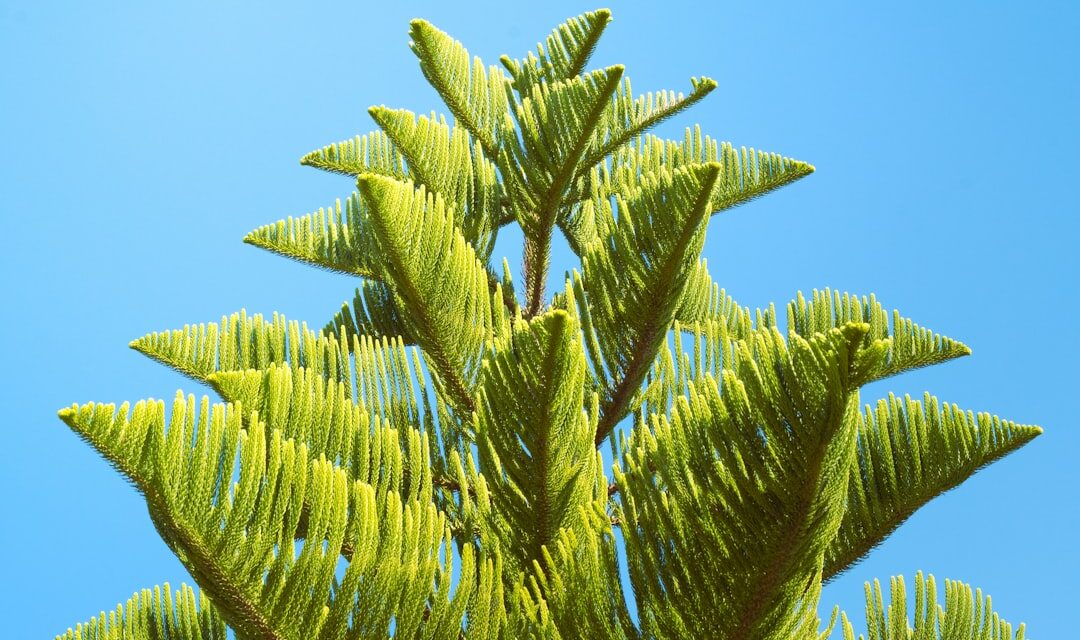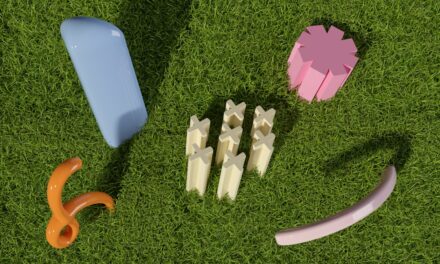Bio art is a form of artistic expression that utilises biological materials, including living tissues, bacteria and DNA, as its primary medium. This relatively novel and innovative field blurs the boundaries between art and science, challenging conventional notions of artistic practice. Bio artists frequently collaborate with scientists and researchers to explore the ethical, social and cultural implications of biotechnology and genetic engineering.
The resulting artworks may take various forms, such as installations, sculptures, performances and interactive experiences. Bio art aims to stimulate thought and discussion about the relationship between humans and the natural world, as well as the impact of technological advancements on society. Bio art is a multidisciplinary practice that draws upon principles from biology, genetics, ecology and other scientific disciplines.
It often involves the use of cutting-edge technologies and techniques, including genetic modification, tissue engineering and synthetic biology. The artworks produced in this genre can be both visually compelling and conceptually rich, addressing complex issues related to identity, biodiversity and the environment. Bio artists are at the forefront of exploring the potential of living organisms as a medium for artistic expression, expanding the boundaries of contemporary art.
Consequently, bio art has garnered attention and recognition within the art world for its innovative approach and ability to engage audiences in critical discussions about the future of biotechnology and its societal impact.
Summary
- Bio art is a form of art that uses biological materials, such as living tissues, bacteria, and DNA, to create thought-provoking and often controversial works.
- The history of bio art can be traced back to the 20th century, with notable developments in the 1980s and 1990s, when artists began to explore the potential of biotechnology in their work.
- The intersection of art and science in bio art challenges traditional boundaries and encourages collaboration between artists and scientists to explore new possibilities and perspectives.
- Ethical considerations in bio art are crucial, as artists and scientists must navigate complex issues such as consent, the treatment of living organisms, and the potential impact on the environment.
- Notable bio artists, such as Eduardo Kac and Oron Catts, have made significant contributions to the field, pushing the boundaries of what is possible and sparking important conversations about the relationship between art, science, and ethics.
- The impact of bio art on society is multifaceted, raising awareness about biotechnology, challenging societal norms, and prompting discussions about the ethical implications of manipulating living organisms for artistic purposes.
- The future of bio art holds great potential for further innovation and exploration, as advancements in biotechnology continue to inspire artists to create new and thought-provoking works that push the boundaries of art and science.
The History of Bio Art
Pioneers of Bio Art
One of the pioneers of bio art was Eduardo Kac, a Brazilian-American artist known for his groundbreaking work with transgenic animals and bioluminescent plants. Kac’s iconic piece “GFP Bunny” (2000) involved the creation of a genetically modified rabbit that expressed green fluorescent protein, sparking controversy and debate about the ethical implications of genetic engineering.
Advancements in Bio Art
Another influential figure in the history of bio art is Oron Catts, an artist and researcher who co-founded the Tissue Culture & Art Project in 1996. Catts and his collaborators have been instrumental in exploring the potential of tissue engineering and regenerative medicine as a medium for artistic expression. In recent decades, bio art has gained momentum as a distinct genre within the contemporary art world, with artists from around the globe pushing the boundaries of what is possible with living organisms and biotechnology.
The Intersection of Art, Science, and Society
The development of bio art has been closely linked to advancements in scientific research and technology, as well as to broader cultural shifts towards a greater awareness of environmental issues and the ethical implications of biotechnology. As a result, bio art has become an important platform for critical reflection on the intersection of art, science, and society, challenging audiences to reconsider their relationship to the natural world and the ethical dilemmas posed by technological progress.
The Intersection of Art and Science

The intersection of art and science has long been a source of inspiration for creative expression and intellectual inquiry. Throughout history, artists have drawn on scientific principles and discoveries to inform their work, while scientists have often been influenced by artistic perspectives in their research. The relationship between art and science is characterised by a mutual exchange of ideas and methodologies, with each discipline offering unique insights into the human experience and the natural world.
In the context of bio art, this intersection is particularly pronounced, as artists collaborate with scientists to explore the potential of living organisms as a medium for artistic expression. Bio art challenges traditional notions of artistic practice by incorporating scientific processes and materials into the creation of artworks. This interdisciplinary approach allows for new forms of creative expression that engage with complex issues related to biotechnology, genetic engineering, and the ethical implications of manipulating living organisms.
By bridging the gap between art and science, bio artists are able to provoke thought and discussion about the impact of technological advancements on society, as well as our relationship to the natural world. The intersection of art and science in bio art offers a unique opportunity for collaboration and dialogue between practitioners from different disciplines, fostering innovative approaches to creative expression and critical inquiry.
Ethical Considerations in Bio Art
Ethical considerations are central to the practice of bio art, as artists engage with living organisms and biotechnology in their creative work. The use of biological materials raises complex questions about the manipulation of life forms, genetic modification, and the potential consequences of these interventions. Bio artists are acutely aware of the ethical dilemmas posed by their practice and often seek to address these issues through their work, prompting audiences to reflect on the implications of biotechnology for society and the environment.
The ethical considerations in bio art extend beyond the creation of artworks to encompass broader discussions about scientific research, technological innovation, and the responsible use of biological materials. One of the key ethical concerns in bio art is the treatment of living organisms as artistic subjects. Artists working with living tissues or genetically modified organisms must consider the welfare and rights of these organisms, ensuring that their work does not cause harm or suffering.
Additionally, bio artists must navigate complex regulatory frameworks governing the use of biological materials in artistic practice, adhering to ethical guidelines and best practices in scientific research. The ethical considerations in bio art are further complicated by broader societal debates about biotechnology and genetic engineering, raising questions about consent, ownership, and control over living organisms. As a result, bio artists play a crucial role in fostering critical dialogue about the ethical implications of biotechnology and its impact on our lives.
Notable Bio Artists
Several notable bio artists have made significant contributions to the development of this innovative genre within contemporary art. Eduardo Kac is widely recognised as a pioneering figure in bio art, known for his provocative works that explore the intersection of biotechnology and artistic expression. Kac’s “GFP Bunny” (2000) sparked international debate about genetic engineering and animal rights, cementing his reputation as a leading voice in the field.
Another influential bio artist is Oron Catts, whose work with tissue engineering and regenerative medicine has pushed the boundaries of what is possible with living organisms as a medium for artistic creation. Catts’ collaborative projects with scientists have resulted in groundbreaking artworks that challenge audiences to reconsider their relationship to biological materials and the ethical implications of biotechnology. Other notable bio artists include Laura Beloff, who explores themes of identity and embodiment through her interactive installations using living organisms; Adam Zaretsky, whose provocative performances engage with issues related to genetic manipulation and biotechnology; and Heather Dewey-Hagborg, who uses DNA as a medium for creating portraits that raise questions about privacy and surveillance.
These artists have played a crucial role in shaping the trajectory of bio art as a distinct genre within contemporary art, pushing boundaries and challenging audiences to confront complex ethical and social issues related to biotechnology.
The Impact of Bio Art on Society

The Ethical Implications of Bio Art
Bio artists have been instrumental in raising awareness about the ethical implications of manipulating biological materials for artistic purposes, prompting critical reflection on the consequences of technological progress for society and the environment. Through their innovative works, bio artists challenge audiences to reconsider their perceptions of living organisms and to engage with complex ethical dilemmas posed by biotechnology.
Interdisciplinary Collaborations and Innovation
Bio art has also had a significant impact on scientific research and technological innovation by fostering interdisciplinary collaborations between artists and scientists. These collaborations have led to new insights into the potential applications of biotechnology for creative expression, as well as for addressing pressing societal challenges related to health, sustainability, and biodiversity.
Bridging the Gap between Art and Science
By bridging the gap between art and science, bio artists have contributed to a greater understanding of the cultural significance of biotechnology and its implications for society.
The Future of Bio Art
The future of bio art holds great promise for continued innovation and exploration at the intersection of art, science, and technology. As advancements in biotechnology continue to expand the possibilities for creative expression with living organisms, bio artists are likely to push boundaries even further, challenging audiences to confront new ethical dilemmas and social implications. The development of new technologies such as CRISPR gene editing and synthetic biology will open up new avenues for artistic experimentation with biological materials, leading to groundbreaking works that provoke thought and discussion about the future of biotechnology.
Furthermore, bio art is poised to play an increasingly important role in shaping public discourse about biotechnology and genetic engineering. As societal debates about these technologies continue to evolve, bio artists will have an opportunity to contribute unique perspectives that engage audiences in critical reflection on the ethical implications of manipulating living organisms for artistic purposes. The future of bio art holds great potential for fostering interdisciplinary collaborations that bridge the gap between art and science, leading to new insights into the cultural significance of biotechnology for society.
In conclusion, bio art represents an exciting frontier in contemporary art that challenges traditional notions of artistic practice by incorporating living organisms and biotechnology into creative expression. The history of bio art is characterised by pioneering artists who have pushed boundaries and sparked critical dialogue about the ethical implications of manipulating biological materials for artistic purposes. Notable bio artists have made significant contributions to shaping this innovative genre within contemporary art, influencing broader cultural conversations about biotechnology and its impact on society.
The future of bio art holds great promise for continued innovation at the intersection of art, science, and technology, fostering interdisciplinary collaborations that contribute to a greater understanding of the cultural significance of biotechnology for society.
If you are interested in exploring the intersection of art and science, you may also want to check out an article on Pop Art. This movement, which emerged in the 1950s, challenged traditional notions of art by incorporating elements of popular culture and mass media. You can learn more about this influential art movement here.
FAQs
What is Bio Art?
Bio art is a form of art that uses biological materials, such as living tissues, bacteria, and DNA, as the medium for artistic expression. It often involves the use of biotechnology and genetic engineering to create living organisms or living systems as part of the artwork.
What are the main themes in Bio Art?
Bio art often explores themes related to the intersection of art, science, and technology, as well as ethical and social implications of biotechnology and genetic engineering. It also addresses issues such as the relationship between humans and the natural world, the manipulation of living organisms, and the boundaries of life and death.
How is Bio Art created?
Bio art is created using a variety of techniques and processes, including genetic modification, tissue engineering, and the cultivation of living organisms. Artists often collaborate with scientists and researchers to access the necessary tools and expertise to work with biological materials.
What are some examples of Bio Art?
Examples of Bio Art include installations using living organisms, sculptures made from biological materials, and artworks that incorporate biotechnology and genetic engineering. Some artists have created living organisms as part of their artwork, such as genetically modified plants or animals.
What are the ethical considerations of Bio Art?
Bio art raises ethical considerations related to the manipulation of living organisms, the potential impact on the environment, and the implications for human health and safety. It also prompts discussions about the boundaries of artistic expression and the responsibilities of artists working with biotechnology.




